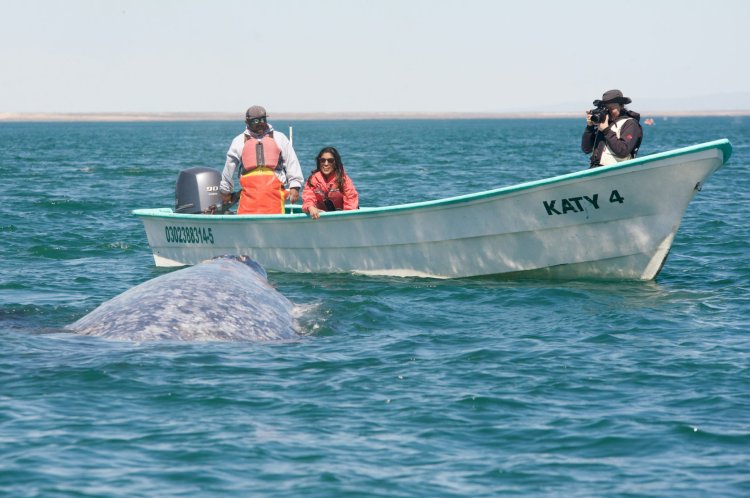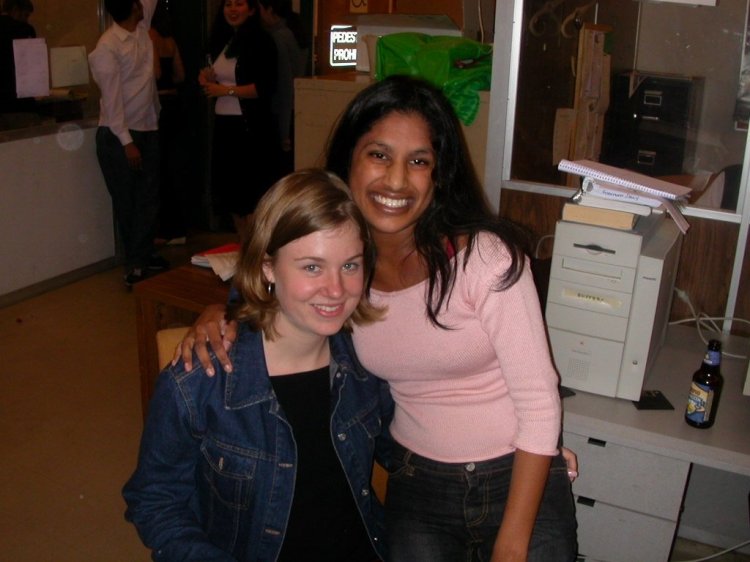Alumni Spotlight: Vauhini Vara ’04
We’re starting a new Alumni Q&A Spotlight series! Join us as we sit down and catch up with Daily alums on what they’ve been up to since their newsroom days, and reflect on their time at the paper and the role it played in their lives + careers.

In our second Q&A in this series, we’re joined by Vauhini Vara ’04, a story editor at The New York Times Magazine, freelance journalist, and fiction writer based in Colorado. Her work has appeared in the pages of The Wall Street Journal, The New Yorker, The Atlantic, Fast Company, WIRED, and more. At The Daily, she held a variety of roles including managing editor, production editor, news writer, and opinions editor. Read on for our conversation on all this and more.
This interview has been condensed and edited for clarity.
The Stanford Daily (TSD): Can you tell us about what it’s like to be a story editor at The New York Times Magazine? What do you do, how does the magazine get made? How has it been transitioning from your prior roles as a reporter and mainly web-based editor, to editing stories for a magazine?
Vauhini Vara (VV): I edit primarily features for the magazine, as well as a little bit of the Letter of Recommendation column, which is this delightful little 900-word column where people get to write about whatever they’re into — and often that is a window into cultural criticism stuff, or interesting personal essays. But I’m mostly working on features, and what that means is that sometimes a feature will get assigned to me … and I will usually have several rounds of back and forth with that writer where it’s not that different from editing a Stanford Daily story, except that the stories are really long.

And then what happens is a story goes to a manuscript meeting, so all the top editors — the editor-in-chief, and his three deputy editors — will all have read the draft of the story plus a little memo I prepare about where the story is, and what I think the continued challenges are. And then we’ll get on a Zoom call like this and they might have ideas for the direction of the story.
The wild thing about this particular magazine that’s different from any other place I’ve worked is that because it’s a weekly [and] because it’s affiliated with a newspaper, there’s a fact checking process and a copy editing process and a production process [that] all takes place way faster than you might think. It sometimes all takes place the week that we close — so I put a story in [Adobe] InCopy around the beginning of the week, and then the fact-checking process and copy-editing and proofing happen that week. And then some stories close on Wednesday, some close on Thursday, and some close on Friday, but it all happens really fast during a period of days, and then you see the story in the magazine. There are some steps I’m missing — every week we have an ideas meeting where we just brainstorm, every week there’s a pitch meeting with just the top editors where they’ll call in the story editors like me to discuss pitches we’ve sent around and stuff like that too.
TSD: How did The Daily prepare you for a career in journalism?
VV: It’s funny to think about it in those terms because for me, The Daily was just my side hobby that I spent all my time on, and then I kept thinking to myself, I need to pick a major and think about what I’m going to do for a living, and yet I kept doing newspaper internships, and then another newspaper internship, and spending all my time at The Daily … I interned for most of my senior year at Stanford Magazine, so, clearly, this was what I wanted to be doing. But somehow it didn’t occur to me that this was what I would just continue doing for the rest of my life, and now here I am.

There’s a way in which — I don’t know, it was almost like a social or cultural preparation that The Daily gave me where I was around other people who were doing the same work. We were doing that thing of just being in this room together for eight hours, all caring deeply about getting it right, understanding the ins and outs of something that happened where we felt like we had half of the story from one good source but we didn’t understand what was happening on the other side with the sources who wouldn’t talk to us.
All that stuff was just fun and exciting and interesting and I always felt like I was learning more and more at The Daily. And also I felt like there was so much that we were doing wrong and still figuring out and were messing up, because we were just starting out. I think really it was that thirst … that feeling that you have of like, ‘This is so interesting and exciting and we really want to get it right, we know we’re fucking up all the time, but we’re still going to keep trying to get it right, there’s so much still to learn.’ And I think it was just that desire, the curiosity and desire to learn more that made me say after I graduated, “I’m just going to do an internship to learn more. Oh, I got a job offer. I’ll just do the job until I get sick of it.” There was never a point where I was like, “Okay, I’ve figured out journalism, I’m done, I’m ready to move on to whatever my real job is going to be.” That’s what I love about the field — you’re always learning something and it never stops.
TSD: What has been the most challenging or most memorable story you’ve had to cover as a reporter?
VV: About a year and a half ago, I did this big cover story for Businessweek that was ‘as-told-to’s’, oral history pieces that were each pretty long — maybe a thousand words with 10 different people — workers around the world who were mostly poor or working class and had jobs that didn’t exist a generation ago.
And the way I was able to do that story was that my husband and I got this teaching job on this study abroad program called Semester at Sea, which is on a ship that goes around the world. A bunch of college students go around the world on a ship and we were teaching classes on that ship. I knew I was going to be on the ship teaching and wanted to do reporting because going to all these different places in the world seemed like a huge reporting opportunity. That starting point was actually the challenge, because I was spending three to six days in each place we were visiting — we were going to places in Europe and Africa and Asia. But I was spending just a few days in each, so my question to myself was, how can I possibly do deep reporting on these places where I don’t necessarily have any cultural context [and] I don’t necessarily speak the language? And so that’s sort of how I came up with the idea for this particular project, because I thought [that] if I do oral histories with people, people will be able to communicate in their own words, [and] there will be less of a possibility of miscommunication or incorrect interpretation on my part of the words of somebody who comes from a world that’s different than mine.
In each of these countries, I ended up hiring a colleague to work with me — in some cases to work as a translator, in some cases to help me figure out who we were going to talk to and to sort of be a cultural translator as well as a language translator … which I bring up because when I was a college student, I thought that the reporters whose stories I was seeing in big, glossy magazines … somebody else made the call for them and got the access and then everything was easy — like, you just showed up somewhere and got to interview Beyoncé or Kamala Harris or whoever. It turns out that that doesn’t actually change. Especially as a freelancer, it’s still pretty scrappy — I’m still writing to Kamala Harris’ people, for example, and saying, “I don’t know who’s going to publish the story yet, but I want to profile Kamala Harris.” Whatever the case may be, whatever the story is, you still are using the same tools that you use when you’re just starting out as a reporter.
If you have any questions about this Q&A, feel free to reach out to The Daily’s alumni engagement team at alumni@stanforddaily.com.